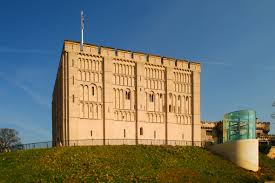Exploring the Rich History of Norwich Castle

Introduction
Norwich Castle is not only an iconic landmark in the city of Norwich but also a symbol of the region’s rich history and cultural heritage. Built in the 11th century as a royal palace, it has seen numerous transformations and has played a crucial role in the development of Norwich as a significant urban centre. The castle serves as a reminder of the medieval period in England and attracts thousands of visitors each year, contributing to local tourism and education.
The Historical Significance of Norwich Castle
Constructed shortly after the Norman Conquest, Norwich Castle was commissioned by King William I around 1067. Initially built as a demonstration of power, it transformed from a royal residence into a military stronghold and later into a prison. Its strategic location has made it an integral part of Norwich’s history, as it dominated the landscape and served as a beacon of authority during turbulent times, including the civil wars of the 12th century.
Over the centuries, the castle has undergone significant renovations. The most notable change came in the 19th century when the castle was transformed into a museum. Today, it houses the Norwich Castle Museum & Art Gallery, featuring collections that tell the story of Norwich’s past as well as art and archaeology from the region.
Recent Developments
In recent years, Norwich Castle has seen substantial developments aimed at enhancing its visitor experience. Major exhibitions have been introduced, showcasing both local history and international artefacts. The museum has also focused on educational initiatives, engaging schools and community groups to foster a deeper understanding of the castle’s significance among younger generations.
In 2023, the castle launched a new exhibition celebrating the contributions of women in the city’s history, highlighting figures that are often overlooked in traditional narratives. This initiative aligns with broader efforts to ensure inclusivity in historical discourse.
Conclusion
Norwich Castle stands as a testament to the city’s resilience and historical depth, reflecting the evolution of society in East Anglia over nearly a millennium. As visitors flock to the castle to explore its galleries and learn about its multifaceted past, the significance of this remarkable structure continues to grow. With ongoing developments and exhibitions, Norwich Castle is not only a place of local heritage but also a vibrant hub for education and culture, promising to engage future generations in the rich tapestry of their city.









